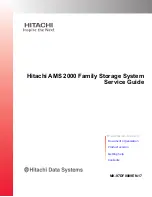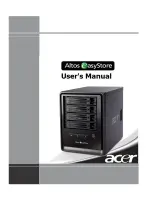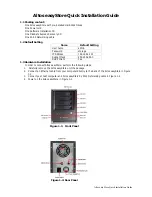
Copyright ©2018, Infoblox, Inc.All right reserved.
See the preceding section,
, for details on optical interface configuration. Also see
SFP/SFP+ Interface Support
Infoblox PT-4000-10GE 10-Gigabit
for details on transceiver usage in the PT-4000-10GE appliance.
Ethernet Connectivity
For a complete summary of 1GbE and 10GbE support on all Infoblox 4000 Series appliances, see
.
Table 5
Table 4
provides more-specific information for each interface on the Infoblox 4000 Series rear panel.
Table 4 Infoblox 4000 Series Rear Panel Components
Component
Description
MGMT Port
A 1000-Mbps gigabit Ethernet port for appliance management, or for appliance services on the network. You enable the
MGMT port and define its use through the Grid Manager after the initial setup.
You must manage the Advanced Appliance PT-4000/PT-4000-10GE through the MGMT port.
LAN1 Port
LAN1 connects the NIOS appliance to the network. You use the LAN1 port for initial appliance setup. It handles all traffic if
you do not enable the MGMT and LAN2 ports.
HA Port (
inactive
and reserved for f
uture use in the N
D-4000 and TR-4
)
000
A port through which the active node in an HA (high availability) pair connects to the network using a VIP (virtual IP)
address. HA pair nodes use their HA ports for VRRP (Virtual Router Redundancy Protocol) advertisements.
HA is support
.
ed in the Infoblox-4010 and PT-4000 appliances
and
: HA Port inactive and reserved for future use.
ND-4000
TR-4000 Reporting
LAN2 Port
LAN2 connects a NIOS appliance to the network. LAN2 is disabled by default. You enable the LAN2 port and define its
use through the Grid Manager after the initial setup.
Console Port
A male DB-9 serial port for a console connection to change basic configuration settings and view basic system functions
through the CLI (command line interface).
If your system lacks a DB-9 serial port, use a properly grounded USB-to-Serial dongle for connection to the serial console
port. If the dongle is connected to a laptop, the laptop also must be properly grounded. Failure to do so may cause
damage to the serial console port of the Infoblox appliance. Infoblox is not responsible for such damage. For DB-9 pin
assignments, see
.
Figure 5
iLO/IPMI Port
Dedicated Ethernet port used for LOM (integrated Lights Out Management) with specific releases of NIOS. Ensure that the
iLO/IPMI port is properly connected to its dedicated IPMI network before you configure LOM through the Grid Manager for
remote management. The IPMI/LOM port supports up to Gigabit Ethernet speeds. Follow best practices for IPMI usage in
the network by not allowing the LOM port to connect to the general-use data center network.
VGA Port
This port is not supported. Use the console port or LAN1 port for initial setup.
USB Ports
Reserved for future use.
Power Supplies
Each of the two redundant power supplies has a power outlet for connecting the appliance to a standard DC (Direct
Current) or AC power source.
Power Supply
LEDs
Green = Normal
Off = System is off or power supply has failed.












































